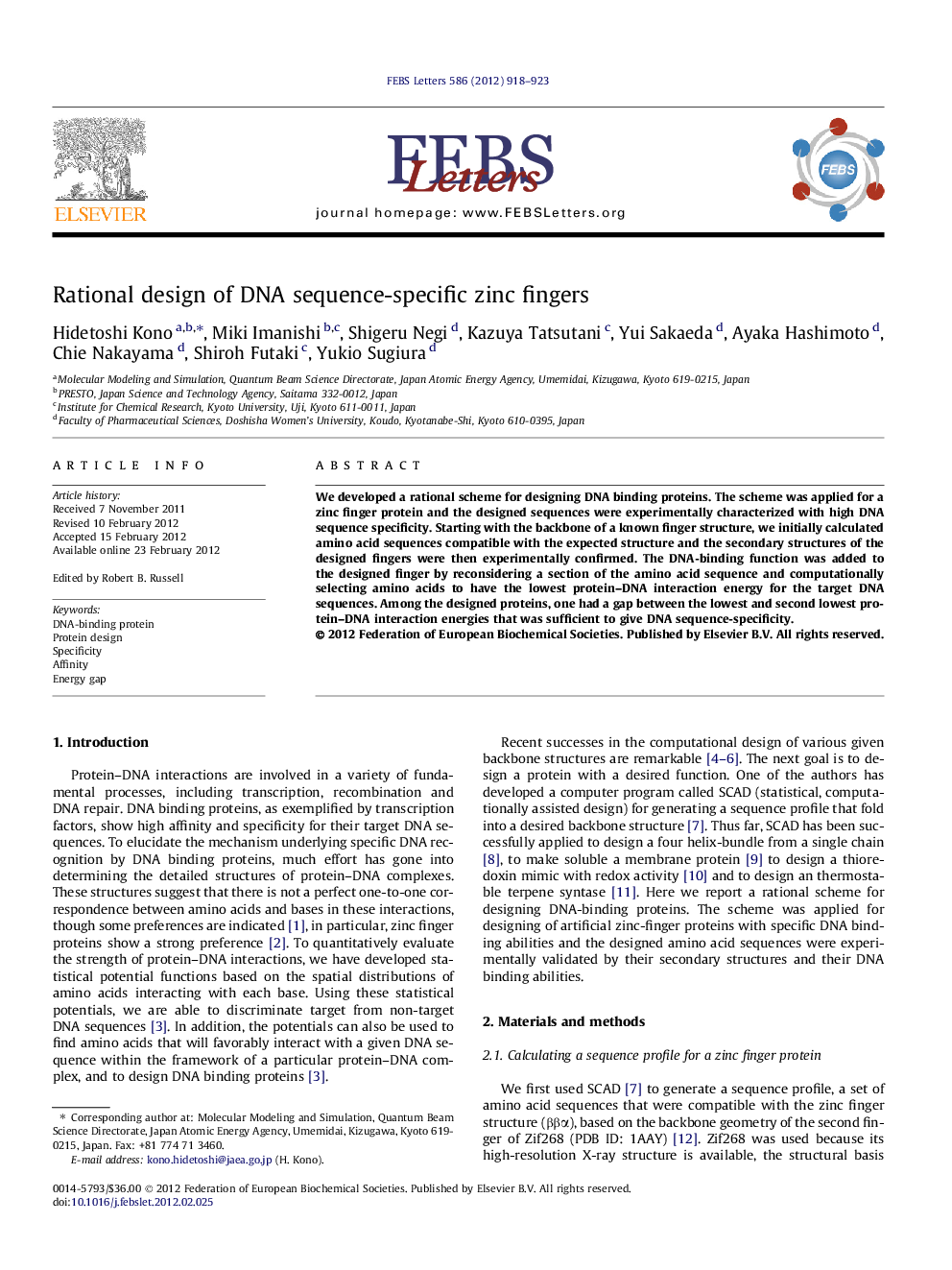| Article ID | Journal | Published Year | Pages | File Type |
|---|---|---|---|---|
| 2048519 | FEBS Letters | 2012 | 6 Pages |
We developed a rational scheme for designing DNA binding proteins. The scheme was applied for a zinc finger protein and the designed sequences were experimentally characterized with high DNA sequence specificity. Starting with the backbone of a known finger structure, we initially calculated amino acid sequences compatible with the expected structure and the secondary structures of the designed fingers were then experimentally confirmed. The DNA-binding function was added to the designed finger by reconsidering a section of the amino acid sequence and computationally selecting amino acids to have the lowest protein–DNA interaction energy for the target DNA sequences. Among the designed proteins, one had a gap between the lowest and second lowest protein–DNA interaction energies that was sufficient to give DNA sequence-specificity.
► A rational scheme for computationally designing DNA binding proteins is proposed. ► The structure and binding of the designed proteins were experimentally validated. ► A large energy gap between the lowest and the second sequences gives binding specificity.
